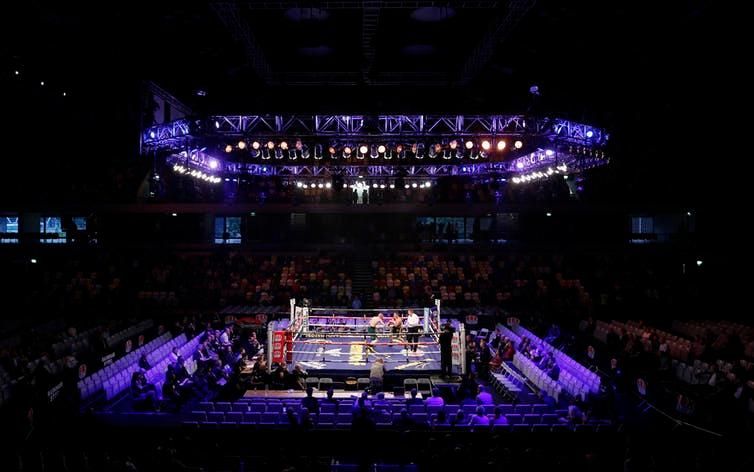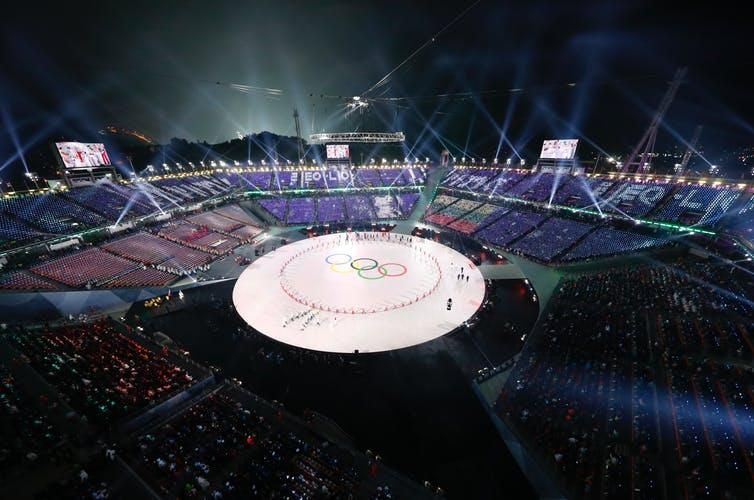Does Pyeongchang Have a Future As a Winter Sports Destination?
South Korea may fall short of its lofty goal to transform the region into an Asian hub for snow and ice sports
/https://tf-cmsv2-smithsonianmag-media.s3.amazonaws.com/filer/81/9c/819ca455-7c0c-4821-8cdf-d80cb6a73029/file-20180223-108113-ax15dv.jpg)
Now that South Korea’s Pyeongchang Winter Olympics have wrapped up, what happens next?
When preparing a bid to host the Olympics, organizers typically promote economic growth, jobs, housing and infrastructure improvements. But as a landscape architect and urban designer who worked on both the Atlanta and London Olympics, I’ve been able to see how these lofty visions don’t always mesh with reality.
So is Pyeongchang in a good position to become a winter sports hub that will fuel economic growth and tourism for years to come? Or will the country’s long-term fiscal health be damaged, leaving a financial burden for future generations?
Ultimately, the legacy of the Pyeongchang Games will depend on the answers to these questions.
By looking at what’s worked – and what hasn’t – in the planning and execution of the games in previous host cities, we can see whether South Korea is poised to benefit from its considerable investment.
Creative planning can transform a city
With good planning, the Olympics can be an economic boon, while spurring some exciting changes to the urban fabric of a city.
The 1984 Los Angeles Summer Olympics turned a profit, generating a US$225 million surplus that has been used to support American Olympic efforts and local youth sports organizations over the decades. After the 1996 Summer Games in Atlanta, the athletes’ village was converted into new dormitories for a local university.
When planning the 2012 London Olympics, organizers took the long view – perhaps more than any other previous host city. They were able to transform an underdeveloped industrial part of the city into a thriving community that includes public open space, infrastructure improvements and affordable housing. Every venue was designed to be retrofitted once the games were completed. For example, the Copper Box Arena, which hosted handball and other events, is now used for an array of indoor sports.

Paris and Los Angeles were chosen to host the Olympic Games in 2024 and 2028, in large part because both cities have hosted the games in the past and have existing venues in place. Planners for Los Angeles Games project that they’ll cost about $5 billion to stage and will generate a surplus. (By comparison, the Rio Games cost $13 billion.)
Los Angeles does plan to build an expensive new stadium for the opening ceremonies. However, this stadium will eventually become the home for the city’s two National Football League teams, the Rams and the Chargers, and the stadium has already been designated the host of the 2021 Super Bowl.
It’s all about the bottom line
For the organizers of the Los Angeles and Paris Games, the financial burden of being a host city is a primary concern.
This is probably because spiraling costs have crippled previous host cities. From 1968 to 2012, every single Olympic Games ended up costing more than originally estimated, with 1976 Montreal and 1984 Sarajevo each costing 10 times the original estimate. It took Montreal 30 years to pay off its debts after the 1976 Olympics.
And despite bold plans to repurpose Olympic buildings, past host cities have been left with vacant, decaying sports complexes that are referred to as “white elephants.”
Beijing’s iconic “Bird’s Nest” stadium has rarely been used since 2008. The Olympic Aquatic Center in Athens has sat vacant since the 2004 Summer Olympics, and many blame Greece’s economic collapse on debts associated with the Olympics.
Nearly two years after the 2016 Rio Olympic Games, most venues are closed or underused. The Rio Olympic stadium has been abandoned and closed to tourists due to a dispute over $1 million in unpaid electricity bills and management fees.
Can Pyeongchang become a winter sports hub?
South Korea hosted the Summer Olympic Games in 1988, and many credit these games for sparking the country’s transformation into an economic powerhouse and a global leader in consumer electronics.
In the case of the Pyeongchang Games, one of country’s stated goals was to help the country become a top winter sports hub in Asia.
There were two main sites chosen for 2018 Winter Olympics: the mountain resort Alpensia and the coastal city of Gangneung. The Alpensia resort was prominently featured during the 2018 games, with downhill and cross-country skiing, snowboarding, ski jumping and biathlon taking place at the site. The city of Gangneung included new stadiums for curling, ice hockey, speed skating and figure skating events.
South Korea ended up investing around $13 billion for the Pyeongchang Olympics. Although this is significantly less than Russia’s record $55 billion tab for the 2014 Sochi Winter Olympics, it still exceeded what the country had budgeted. A major portion of that has gone to new hotels in Gangneung, housing projects, venues and transportation projects, like a high-speed rail that links Seoul to Pyeongchang’s remote venues. This rail would provide access to the ski resorts and help further South Korea’s vision for creating an Asian winter sports hub.
Yet anyone who watched the games on TV couldn’t help noticing that many events were poorly attended. There could be a number of explanations, including a Chinese travel ban that prevented Chinese fans from attending, the country’s distance from Europe and North America, a lack of local interest in alpine sports, and early morning starting times.
However, it does make you wonder if South Korea’s vision for a major Asian winter sports hub is viable. Many global economists predict that a major increase in regional tourism and economic growth is unlikely.
Nonetheless, organizers seem to have learned from the successes and failures of previous host cities, from Atlanta to Athens.
For example, South Korea built a complex of eight 15-story apartment buildings in Pyeongchang to house the Olympic athletes. All of the apartments have already been sold, with most going to domestic buyers.
And to avoid “white elephants,” organizers in South Korea are planning to demolish some of the new venues after the games, deeming that it would be too impractical to try to repurpose them. For example, the new Olympic stadium cost $109 million to build and seats 35,000 people. But there are currently only 40,000 people living in the region. So the stadium will go by way of the wrecking ball once the games conclude.

South Korea’s vision of creating a top winter sports hub might be in doubt. But South Korea did use the Olympics to flaunt its technological prowess, showcasing cutting-edge technologies such as a 5G mobile network and self-driving buses.
So perhaps the legacy of Pyeongchang will be that it encouraged further expansion of the country’s technology sector, just as the 1988 Seoul Games helped transform South Korea into an electronics powerhouse.
As with all cities that take the gambit of hosting Olympic games, time will tell.
This article was originally published on The Conversation.
James Sipes, Instructor of Geodesign, Pennsylvania State University